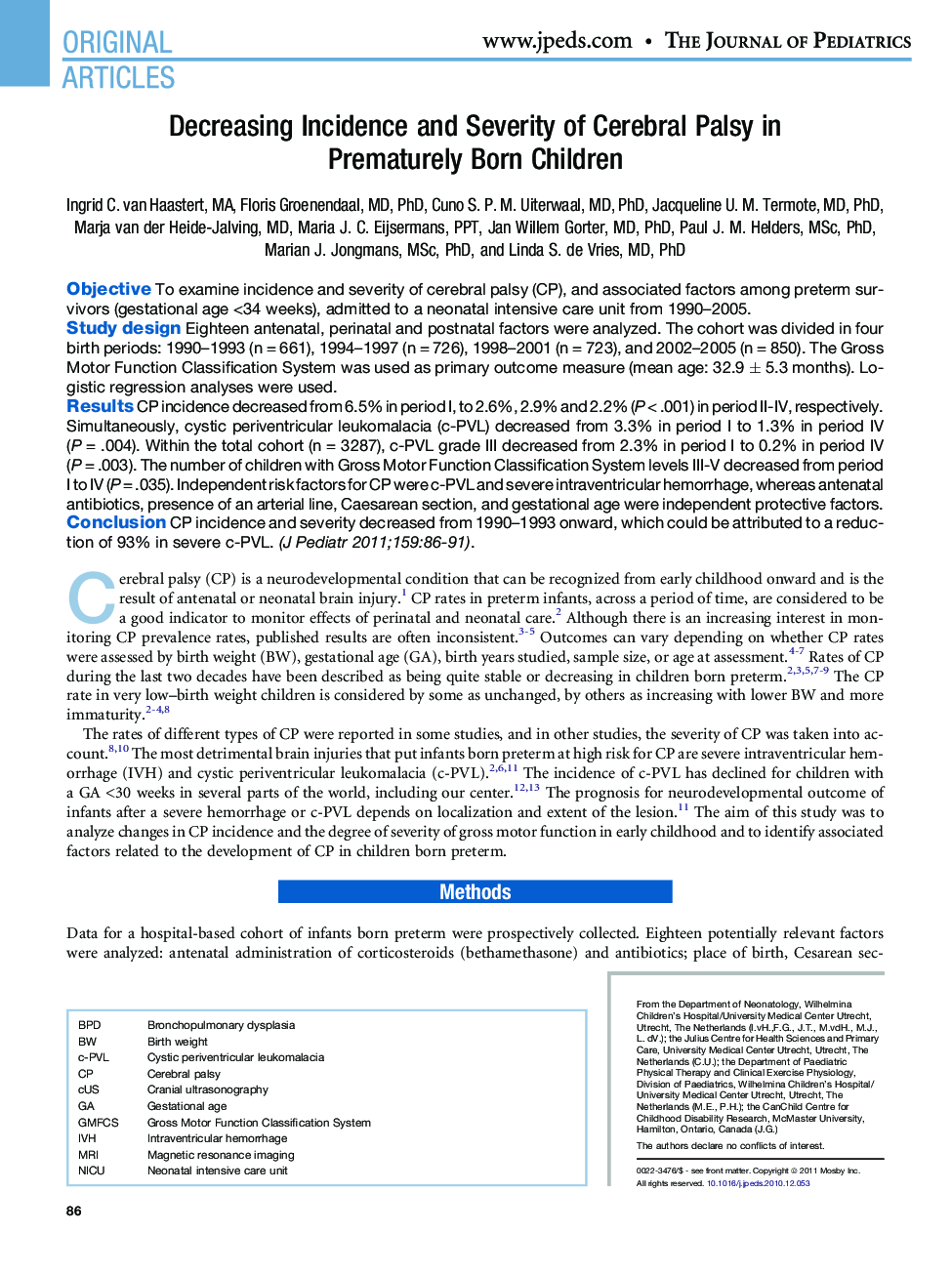| Article ID | Journal | Published Year | Pages | File Type |
|---|---|---|---|---|
| 6225440 | The Journal of Pediatrics | 2011 | 7 Pages |
ObjectiveTo examine incidence and severity of cerebral palsy (CP), and associated factors among preterm survivors (gestational age <34 weeks), admitted to a neonatal intensive care unit from 1990-2005.Study designEighteen antenatal, perinatal and postnatal factors were analyzed. The cohort was divided in four birth periods: 1990-1993 (n = 661), 1994-1997 (n = 726), 1998-2001 (n = 723), and 2002-2005 (n = 850). The Gross Motor Function Classification System was used as primary outcome measure (mean age: 32.9 ± 5.3 months). Logistic regression analyses were used.ResultsCP incidence decreased from 6.5% in period I, to 2.6%, 2.9% and 2.2% (P < .001) in period II-IV, respectively. Simultaneously, cystic periventricular leukomalacia (c-PVL) decreased from 3.3% in period I to 1.3% in period IV (P = .004). Within the total cohort (n = 3287), c-PVL grade III decreased from 2.3% in period I to 0.2% in period IV (P = .003). The number of children with Gross Motor Function Classification System levels III-V decreased from period I to IV (P = .035). Independent risk factors for CP were c-PVL and severe intraventricular hemorrhage, whereas antenatal antibiotics, presence of an arterial line, Caesarean section, and gestational age were independent protective factors.ConclusionCP incidence and severity decreased from 1990-1993 onward, which could be attributed to a reduction of 93% in severe c-PVL.
